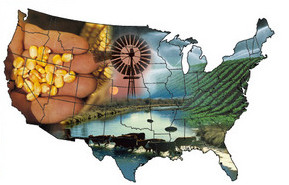Index
- Alaska Climate Divisions FAQs
- Anomalies vs. Temperature
- Arctic Sea Ice Measurements
- Billion-Dollar Disasters: Calculating the Costs
- Binomial Filter
- Climate Division Dataset Transition
- Climate Extremes Index
- CLIMAT Messages
- Climatological Rankings
- Coral Reef Bleaching
- Dead Fuel Moisture
- Definition of Drought
- Drought Indicators
- Drought in the Colorado River Basin
- Drought vs. Aridity
- El Niño: A Historical Perspective
- Explanation of the 500 mb Flow
- Future Drought
- Global Precipitation Percentile Maps
- Global Regions Definitions
- Global Temperature Anomaly Percentile Maps
- Global Temperature Uncertainty
- Groundwater Drought Indicators
- Hawaiʻi Climate Divisions FAQs
- LOESS
- Measuring Drought
- Monthly Releases
- Monthly Report RSS Feed
- National Data Flow
- nClimDiv Maximum and Minimum Temperatures
- Palmer Drought Index
- Potential Evapotranspiration
- Reforestation of Bastrop Lost Pines
- Regional Climate Centers
- Regional Snowfall Index (RSI)
- Satellite-Based Drought Indicators
- Soil Moisture Water Balance Models
- Southern Hemisphere Snow Cover Extent
- Standardized Precipitation Index
- Streamflow Drought Indicators
- Subtropical Highs
- Tornado Count
- U.S. Climate Divisions
- U.S. Climate Normals
- U.S. Drought Monitor Scale
- USHCN Version 2.5 Transition
- Water Supply vs. Water Demand
Definition of Drought
Drought is a complex phenomenon which is difficult to monitor and define. Hurricanes, for example, have a definite beginning and end and can easily be seen as they develop and move. Drought, on the other hand, is the absence of water. It is a creeping phenomenon that slowly sneaks up and impacts many sectors of the economy, and operates on many different time scales. As a result, the climatological community has defined four types of drought: 1) meteorological drought, 2) hydrological drought, 3) agricultural drought, and 4) socioeconomic drought. Meteorological drought happens when dry weather patterns dominate an area. Hydrological drought occurs when low water supply becomes evident, especially in streams, reservoirs, and groundwater levels, usually after many months of meteorological drought. Agricultural drought happens when crops become affected. And socioeconomic drought relates the supply and demand of various commodities to drought. Meteorological drought can begin and end rapidly, while hydrological drought takes much longer to develop and then recover. Many different indices have been developed over the decades to measure drought in these various sectors. The U.S. Drought Monitor depicts drought integrated across all time scales and differentiates between agricultural and hydrological impacts.
 NOAA's National Centers for Environmental Information
NOAA's National Centers for Environmental Information

